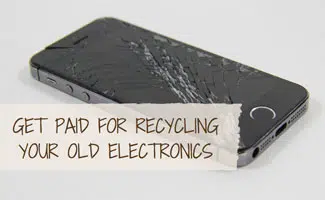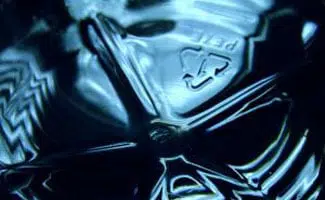When you purchase through links on our site, we may earn a commission. Here’s how it works.

Seven Plastic Recycle Codes
In total, seven different numbers are used to identify plastic recyclables. Each of these numbers is used to determine the seven different types of plastic goods available on the market currently.
The figures themselves are referred to as resin identification codes by professionals and tell recyclers more about the kinds of plastic used in a container. Some variations in plastic composition make specific items more or less eco-friendly or easier or harder to recycle, resin identification codes identify these characteristics.
What Can Most Commonly Be Recycled And How?
While recycling capabilities may vary somewhat from city to city in the US, here are the general rules most can follow.
- Only #1 bottles and #2 are commonly accepted by community recycling centers. All others are not recycled in most municipalities.
- #4 plastics and most polyethylene film and bags (grocery bags, bread bags, toilet paper film wraps, sandwich bags, etc.) can be recycled at the grocery store drop-off bins that are commonly labeled for plastic bag recycling.
- #5 plastics can be taken to Whole Foods at this time for them to facilitate the recycling process.
Unless you have confirmed otherwise with your local waste management department, all other plastics should go to the landfill (or avoided if possible), so you don’t “contaminate” the recycling and overburden your local program.
To learn more about your local recycling options, visit BeRecycled.org and enter your zip code.
PET Or #1 Plastics
Quality: Thin, transparent, flexible and shiny like glass.

PET products include plastic soda bottles, medicine containers, water bottles and vinegar bottles. Community recycling services will pick up PET plastic bottles.
An exception to this rule: plastic clamshells (commonly used for berries, salad, herbs, tomatoes) are made from PET thermofoam and require a very different and more harmful recycling process. This means that most communities do not accept #1 clamshells, despite their acceptance of #1 plastic bottles. Do NOT include these items in your recycle bin.
PET #1 plastic bottles are easily recycled by most municipalities that accept recycled materials. However, #1 clamshells are NOT accepted at most centers.
HDPE Or #2 Plastics
Quality: Tougher but semi-flexible, opaque or colored, waxy surface.

This type of plastic is not clear, and while it is considered to be safe, it has the potential for leaching into products contained within the bottle. Community recycling services will also pick up HDPE plastic products.
#2 plastics are accepted at most community recycle centers.
V Or PVC Or #3 Plastics
Quality: Tough and durable; can be clear or colored.

Products made from PVC plastic should not be near food during cooking since it contains phthalates. Phthalates have been proven to interfere with hormone development. Environmentalists warn against frequent use of this type of plastic, especially around food. Community recycling services do not commonly pick up PVC plastic.
#3 plastics are NOT commonly accepted at community recycling service centers.
LDPE Or #4 Plastics
Quality: Soft, thin, flexible and translucent colored.

While this type of plastic is considered safe to be close to food products, most community recycling services do not accept it.
#4 plastics are NOT generally accepted by recycling programs. However, these are accepted at most grocery store plastic bag drop-off bins (commonly near the entrance).
PP Or #5 Plastics
Quality: Hard but flexible, waxy surface and opaque in color.

This type of plastic is recognized as “safe,” and although not widely accepted by community recycling services, it is becoming more widely accepted.
#5 plastics are NOT accepted at most community recycling centers but you can often find local retailers who will take them (e.g., Whole Foods).
PS Or #6 Plastics
Quality: Very soft and white, lightweight and easy to puncture.

Research indicates that this type of plastic is dangerous in that it leaches potentially toxic chemicals that can affect human health. This leaching is an exceptional risk if the packaging is heated, such as in a microwave. Environmentalists suggest avoiding this type of plastic product. PS or #6 is tough to recycle, and community recycling services generally will not accept it.
#6 plastics are NOT accepted at most recycling hubs.
OTHER Or #7 Plastics

A few products from this category include computer cases, items that contain BPA, more modern plastics, stain-resistant food storage containers, baby bottles and polycarbonate items.
Since there is no telling what items combine in #7 plastics, there is no way of knowing whether they pose a risk to users. So there is a general warning against using them. Not knowing the composition of #7 category plastics also makes them very difficult to recycle and as such community recycling services usually do not accept these items.
#7 plastics are NOT allowed at most recycling locales.
Learn More About Recycling
Learn more nifty information about the numbers associated with plastics for your recycling. Remember the three R’s: Reduce, Reuse and Recycle!
What To Look Out For
These guidelines make it easy to see which plastic products are best for everyday use and which we should avoid. There are times when we have little choice in the plastics we use, but when we do, it is essential to pay attention to resin identification codes. Chemical leaching and unsafe plastic products present ongoing concerns, but education can help reduce our risk of health complications.
What illnesses and side effects have been linked to “unsafe” plastic products? Studies indicate that prolonged exposure to BPA can result in genetic damage, miscarriage, low birth weight, poor growth patterns, delay in the onset of puberty, the development of cancer, development of obesity and development of diabetes. It has even been shown that BPA can pass through a nursing mother’s breast milk to her infant. While BPA containing products are now becoming few and far between, many people ask whether other plastics are having the same unhealthy effects on the human population.
What do you do to reduce your use of plastic?
Tagged With: Recycling

